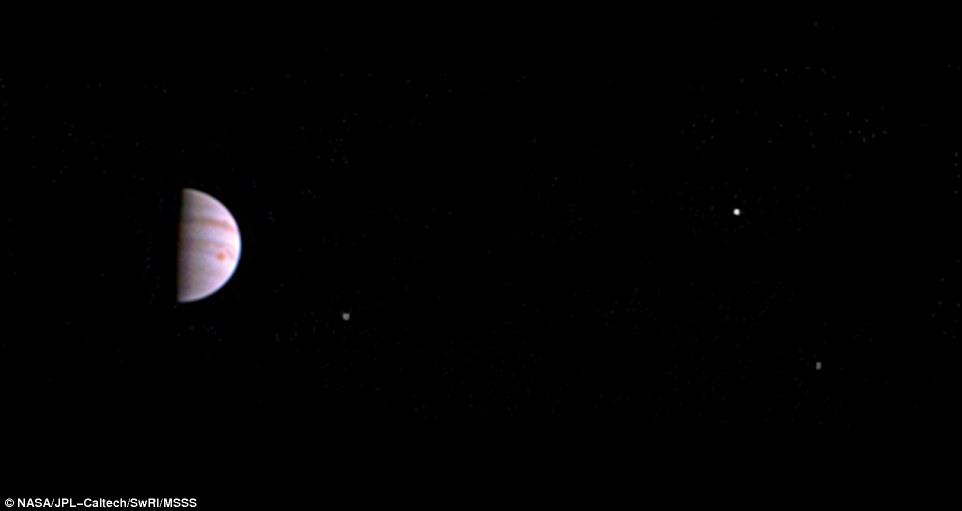
The NASA spacecraft has returned its first picture after being sent to the solar system’s largest planet last week.
The photo, taken from the spacecraft’s JunoCam camera 2.7 million miles away from Jupiter, shows the planet’s famed Great Red Spot along with three of its four largest moons., Europa and Ganymede, according to CNN.
Juno entered Jupiter’s orbit on July 4 and took the picture about six days later. While the first high-resolution images of the gas giant are still a few weeks away, scientists are very pleased with the first image, which means the mission is successful, so far.
The fifth rock from the sun and the heaviest planet in the solar system, Jupiter is known as a gas giant, made up of hydrogen and helium, unlike the rocky Earth and Mars. Jupiter is said to have likely formed first, right after the sun. Looking at its history could hold clues to understanding how Earth and the rest of the solar system was created, according to the Associated Press.
“This scene from JunoCam indicates it survived its first pass through Jupiter’s extreme radiation environment without any degradation and is ready to take on Jupiter,” Scott Bolton, principal investigator from the Southwest Research Institute in San Antonio, said in a statement.
The real work won’t begin until August, when the spacecraft will swing in closer. Plans call for Juno to swoop within 3,000 miles of Jupiter’s clouds, closer than previous missions, to map the planet’s gravity and magnetic fields and learn about the interior makeup.
While JunoCam’s pictures will be helpful to the science team, the main purpose of the images is to help with public engagement.
Similar to Galileo, launched in 1989, which circled Jupiter for almost a decade, Juno, after its five-year voyage, will meet its end in 2018. The spacecraft will deliberately dive into Jupiter’s atmosphere and disintegrate—a necessity to prevent any chance of accidentally crashing into the planet’s potentially habitable moons.




